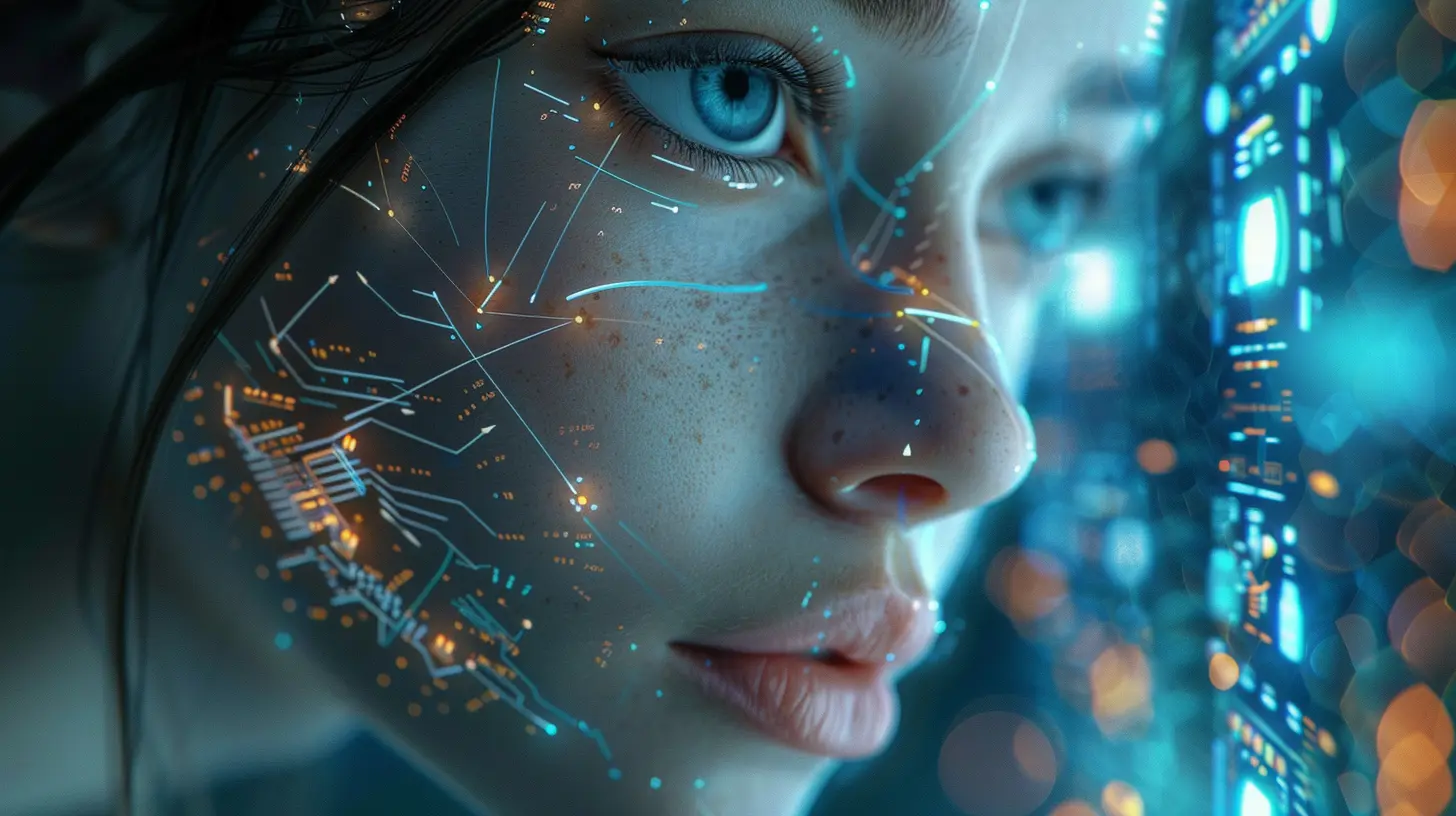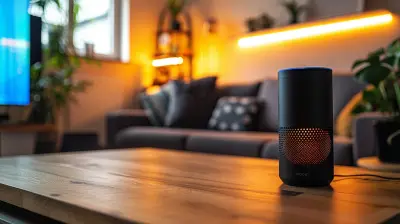Why Digital Assistants are More Than Just Voice Command Tools
6 April 2025
In today’s fast-paced, tech-driven world, digital assistants have become a common part of our lives. Whether it’s asking Siri to play your favorite song or telling Alexa to turn off the lights, we’ve all gotten pretty cozy with these AI-powered tools. But here’s the kicker: Digital assistants are way more than just voice-activated gadgets that make you feel like a wizard. They’ve evolved into powerful, multifaceted tools that are shaping the future of how we interact with technology.
If you think digital assistants are just for setting reminders, think again. Let’s dive deeper into why digital assistants are more than just voice command tools.

What Exactly Are Digital Assistants?
Before we get into the nitty-gritty, let’s clarify what a digital assistant is. A digital assistant is an AI-powered software designed to help you accomplish tasks with minimal effort. The most recognizable ones include Apple’s Siri, Amazon’s Alexa, Google Assistant, and Microsoft’s Cortana. These assistants use speech recognition, natural language processing, and machine learning to understand and respond to your requests.But here’s where things get interesting—they go far beyond just answering questions or setting timers. These assistants are evolving to become multi-functional, proactive tools that can enhance productivity, offer personalized experiences, and even anticipate your needs before you ask.

Not Just About Voice Commands Anymore
When digital assistants first hit the scene, they were pretty basic. You’d say something like, “What’s the weather like today?” and boom—you’d get an answer. But as technology has advanced, so have these assistants. They’re no longer just voice command tools; they’re becoming integral to managing your daily life.They can now interact with other apps, manage complex workflows, and even make decisions on your behalf based on past behavior. Think about it: When was the last time you had to manually type out a search or look up directions? Probably not as often as you used to, right?
Digital assistants have moved from being passive tools to becoming active participants in our digital lives. They’re learning from us, adapting to our needs, and offering solutions before we even realize we need them.

The Rise of Contextual Awareness
One of the biggest reasons digital assistants are more than just voice command tools is their growing ability to understand context. We’re not just talking about basic voice recognition anymore. These assistants are becoming contextually aware, which means they can understand the bigger picture of what you’re asking.For example, let’s say you ask your assistant, “Where’s the nearest coffee shop?” A few years ago, it might’ve just given you a list of coffee shops in your area. Now, depending on your preferences and past behavior, your assistant might recommend the one you usually go to, or even suggest one with a great Wi-Fi connection if you have a meeting coming up.
This kind of contextual awareness makes digital assistants far more useful than the simple voice command tools they once were. Instead of just giving you answers, they’re giving you the right answers, tailored to your specific situation.

Integration with Smart Homes and IoT
We can’t talk about the evolution of digital assistants without mentioning their role in smart homes and the Internet of Things (IoT). These assistants are now becoming the hub through which we control everything from our thermostats to our security cameras.Imagine coming home after a long day. Instead of fumbling with switches, you can just say, “Hey Google, I’m home,” and your digital assistant will adjust the lights, turn on your favorite playlist, and even set the thermostat to your preferred temperature.
This level of integration goes beyond simple voice commands; it’s about creating a seamless living experience where everything is interconnected. Your assistant knows when you’re home, what you like, and how to make your environment more comfortable. This kind of smart integration is a game-changer, making digital assistants indispensable in modern homes.
Managing Your Digital Life
Another area where digital assistants shine is in managing your digital life. Sure, they can send texts or set reminders, but they’re also capable of handling much more complex tasks.For instance, many digital assistants can now manage your emails, schedule meetings, and even provide daily briefings. Google Assistant, for example, can give you a rundown of your day, including traffic updates, reminders, and any upcoming appointments. It’s like having a personal assistant at your fingertips—minus the hefty salary.
And let’s not forget about multitasking. Digital assistants can juggle multiple tasks at once, something that would be impossible for a human to do efficiently. They can control your music, send a text, and check your calendar all at the same time.
AI and Machine Learning: The Brains Behind the Operation
So how are these assistants getting so smart? The magic lies in artificial intelligence (AI) and machine learning. Every time you interact with your digital assistant, it’s learning. It’s figuring out the nuances of your speech, picking up on your habits, and improving its ability to assist you in the future.This is where digital assistants transcend the role of mere voice command tools. They’re evolving. Over time, they become better at understanding you, predicting your needs, and offering more personalized solutions.
For example, if you always check the weather before heading out in the morning, your assistant might start giving you a weather report without you even asking. Or, if you frequently call certain people at a specific time, it might suggest calling them when that time rolls around.
This level of intelligence and adaptability is what sets modern digital assistants apart from their early, more basic versions. They’re not just waiting for commands; they’re learning from you and proactively offering help.
Personalization and User Experience
One of the coolest things about digital assistants is how personalized they’ve become. They don’t just provide generic answers; they tailor responses based on your specific preferences, habits, and routines. This personalization goes far beyond just remembering your favorite song or coffee order.For instance, your digital assistant can now suggest activities based on your location, recommend podcasts based on your past listening behavior, or even remind you to exercise if you’ve been sitting for too long. It’s like having a friend who knows you really well, but without the need for small talk.
This level of personalization is why digital assistants are more than just voice command tools. They’re evolving to become a part of your life, learning from you and making your everyday experiences more convenient and enjoyable.
The Future of Digital Assistants: More Than Just a Tool
So, where are we headed with digital assistants? The truth is, we’re only scratching the surface of what these tools can do. As AI continues to advance, digital assistants are likely to become even more integrated into our lives.They might start playing a bigger role in healthcare, helping to monitor vital signs or remind you to take medication. Or, they could become more involved in education, assisting with personalized learning plans or even tutoring.
In the business world, digital assistants are already starting to make waves by automating repetitive tasks, streamlining workflows, and even providing real-time data analysis. They’re not just tools; they’re becoming essential partners in both personal and professional life.
And who knows? In the not-so-distant future, we might rely on digital assistants for things we can’t even imagine today.
The Human Element: Will Digital Assistants Replace Us?
Of course, whenever we talk about AI, there’s always the question: Will digital assistants replace humans? While they’re getting smarter and more capable, the answer is no. At least, not in the way we think.Digital assistants are here to augment our capabilities, not replace them. They handle repetitive tasks, manage data, and streamline processes, allowing us to focus on more creative, human-centric tasks. In other words, they give us time to do the things we’re best at—problem-solving, innovating, and connecting with others.
So, while they might take over some of the more mundane aspects of our lives, they’re not going to make us obsolete. Instead, they’ll help us work smarter, not harder.
Conclusion: More Than Just a Voice
In summary, digital assistants have come a long way since their early days as simple voice command tools. They’ve evolved into powerful, AI-driven systems that can manage our lives, personalize our experiences, and even anticipate our needs. From smart home integration to managing our digital lives, these assistants are becoming indispensable companions in today’s tech-centric world.So, the next time you ask Siri or Alexa to set a reminder or play a song, remember: they’re doing a whole lot more behind the scenes. Digital assistants aren’t just voice command tools; they’re the future of how we interact with technology.
all images in this post were generated using AI tools
Category:
Digital AssistantsAuthor:

Jerry Graham
Discussion
rate this article
7 comments
Easton McLaurin
Great article! It highlights the depth of digital assistants beyond simple voice commands. I appreciate how you emphasized their evolving roles in enhancing user experience and daily productivity. It’s fascinating to see how technology can adapt to our needs in such meaningful ways. Thank you for sharing!
May 16, 2025 at 11:38 AM

Jerry Graham
Thank you for your kind words! I'm glad you found the article insightful and appreciated the evolving role of digital assistants. Your feedback means a lot!
Audrey Griffin
Digital assistants: the only friends who listen to your every word, remind you of your meetings, and never judge you for asking how to boil water. They may not bring you coffee, but they’re great at reminding you where you left your keys!
April 23, 2025 at 10:52 AM

Jerry Graham
Absolutely! Digital assistants are like non-judgmental friends that enhance our daily lives by helping us stay organized and informed. They're invaluable companions in our busy routines!
Gideon McFee
This article highlights the evolving capabilities of digital assistants, showcasing their role in enhancing productivity and daily tasks beyond simple voice commands. Great insights!
April 12, 2025 at 4:11 AM

Jerry Graham
Thank you! I'm glad you found the insights on the evolving role of digital assistants valuable.
Wilder Barron
Digital assistants are revolutionizing our interaction with technology, transcending voice commands to enhance productivity, streamline daily tasks, and redefine user experiences. Embrace the future!
April 11, 2025 at 1:00 PM

Jerry Graham
Thank you! I completely agree—digital assistants are reshaping how we engage with technology and making our lives more efficient and intuitive. Exciting times ahead!
Erin Hurst
Intriguing! What other capabilities are digital assistants developing?
April 10, 2025 at 6:35 PM

Jerry Graham
Digital assistants are evolving to include features like proactive suggestions, context-aware responses, task automation, and integration with smart home devices, enhancing their utility beyond simple voice commands.
Theodora McManus
Great insights on technology's evolution!
April 9, 2025 at 2:26 AM

Jerry Graham
Thank you! I'm glad you found the insights valuable!
Erin Castillo
Digital assistants: the unsung heroes of productivity, blending AI smarts with human-like intuition beyond mere voice commands.
April 8, 2025 at 2:56 AM

Jerry Graham
Thank you! Digital assistants truly enhance our productivity by seamlessly integrating AI capabilities with intuitive, human-like interactions, proving their value beyond simple voice commands.
MORE POSTS

How AI is Powering the Next Generation of Wearables

How to Use Data Analytics to Optimize Product Development

How Transparent Solar Panels Are Redefining Eco-Friendly Architecture

Common Cloud Security Pitfalls and How to Avoid Them

How to Use Google Assistant or Alexa with Your Smart TV

AI-Generated Art: A New Canvas for Creativity